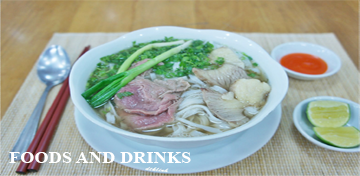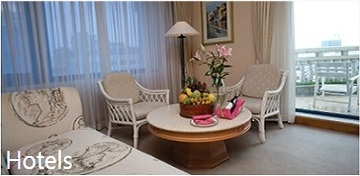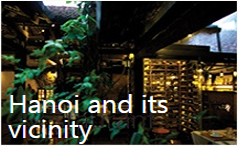Culture
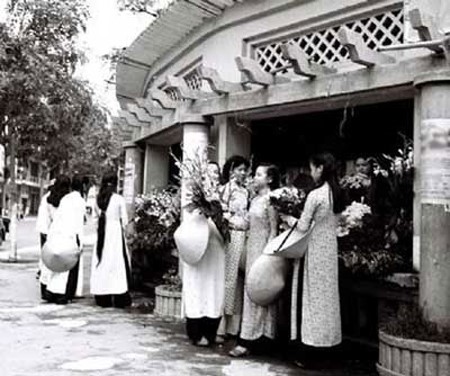
The adage about the beauty of Thang Long people comsume with the cachet of quaint and elegant in Hanoi. Hanoians are proud of this honor, especially the women of 36 Old Streets
Time by time, on the rush of life, the twist of the integration, a lot of things, many values were washed away, but the people of Thang Long, Hanoi, they always keep the family life style, holding the Trang An culture by teaching their descendant's manner of speaking, walking, eating and their cultural costume of Kinh Ky land which they are proud.

Over the period of history, the way of Hanoians dressing also changed but they still retained the elegance and charming culture of Thang Long - Hanoi Thousand Year Civilization. Hanoians are looking for the beauty of the old Hanoi costume together so that they respect the cultural values of Thang Long.
There are many scientific evidences showing the gorgeous way of Hanoians dressing at Hung Vuong Dynasty. Looking at the ornament of Co Loa's drum (dug in the abyss of Co Loa , Dong Anh - Hanoi), we can visualize the festival costume of Hanoi people: feathered hat, clothing is also made of feathers. It is possible that the warrior was holding a weapon. The weapon was pitched with feathers because Bird which is supposed that was the totem of ancient Vietnamese people. The description of this image is loveable and popular on the drum. The scene of couple was pounding rice, the man was described as wearing loincloth. The image of costumes was shown vital and graceful where the statue of woman was carved on dagger-handle at that time: tunics, wasped waist, Ankle Length Skirts, with many beautiful patterns on skirts shirt, caftan, top hat and ribbon tied with horizontal forehead.
At the period of feudal, there may have a distinction between classes of kings, mandarin and the common people. Male were belong to commoner class, they wore daily workwear even loincloths. This is suitable for working and hot, humid weather. Women wore skirt ulti Ming Mang Dynasty. We could say that the common costumes hadn't been much changing for nearly two thousand years. In Thang Long – Dong Do, the Royal had sophisticated costumes and wrote carefully in books of history. At Ly Dynasty, Canh Thin (1040), the King gave the proclamation that distributed all of the costumes in warehouse for mandarins and from the fifth grade would get robe. (Completed Annals of Dai Viet, the Second Book, Ly Dynasty).
At Tran Dynasty, Hung Long eighth year (1300), defined style cap coat: Tung mandarins wore blue flowers hat according to old regulations, the sleeve of the civil martial was from 0.9 to 1.2m-wide. The Mandarins didn't wear Xiem and Tung mandarins shall not be allowed to were normally (hat with green flowers with two golden rings on the two sides) (Completed Annals of Dai Viet, the Fifth Book, Tran Dynasty).
From Le Dynasty, aristocratic costume was regulated more strictly based on the Mandarins' grades: The Mandarins from the least to the third grade used "sa tau for spring and summer and "doan tau" for autumn and winter with jet black. Regarding towels: civil mandarins have two "tao', military mandarins have one "tao". The fourth-grade civil mandarins used home –made "sa" and ‘doan" for clothing. Court officials used shawl called "binh dinh", then used ‘luc lang" shawl. The Mandarins and court officials were officiated and worked at the ceremony must be worn "sa tham" hat and. "sa thanh" clothes. The Mandarins must wear like that when in the Cabinet.
In early morden time, Hanoi people paid special attention to dressing. The first stage was the selection of clothing materials. "The cloth" was preferred which was loosely woven by silk, then dyed in the dark clours. The cloth was from La Ca village. Linen of Buoi village was the best material to sew female trousers because of fiber smooth and glossy surface. Male's trousers were sewed by white silk of Co Do village. In addition, some high quality farbics were often used such as: sa, xuyến, băng, là, xồi, đũi, nhiễu...(muslin, linen,...) which were produced in craft villages in Hanoi or surrounding provinces. Some special products including đoạn, gấm, vóc,...(brocade) .. were made for royal family.
The burghers who lived in handicraft villages prefered to wear in dark, white and brown clothes. Clothes were dyed by brown tuber which provides durable colors as well as durable yarn. Dong Lam Street was famous for dying brown cloth. While the girls liked dying their clothes become aubur to show their pale-skinned beauty, the older people liked fuscous one. Hang Dao Street was famous for dying cashew-nut colour.
Ha Thanh sewers were also skifull, which was showed by styled dresses, "4-part dress" is one of the oldest women's clothes that are known nowadays. When they worn it, they often had a graceful blue belt. In some practical cases, people tightened a "ruot tuong" instead of belts to hold money and the odds and ends. Some people took alongside their waists silver "xa tich" to keep betel lime. Sometime, "4-part dress" added one more lappet to sew button and it usually had 5 buttons. Inside the "4-part dress" was white plastron.
The cultrue in dressing of Hanoians is special. They wear beautiful, the beauty of discreet and not showy or flashy. Hanoians always keep this special tradition even in the difficult time of the war or inn subsidized years or before the whirlwind of the opening period. Each period has its own costume, but all follow the "common denominator" which is the elegence.
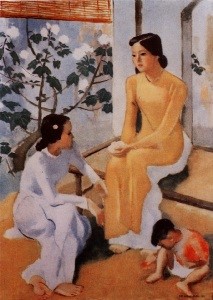 |
Before 1945, women in the intellectual and bourgeois families usually wore Ao Dai even when they went to the market. Women in families that have shops or stores with a lot of customers, the women also wore Ao Dai at home. In some special occasions such as Tet or Holidays, women had a special, beautiful and luxurious one. Women who are workers, usually wore 4-part dress.
After independence in the North, many older women in the former bourgeois families found it difficult to get familiar with wearing shirt instead of the traditional shirts. But the young and enthusiastic people could adapt easier. Therefore, Ao Dai seemed to disappear in the hard time of country which lasted from 60s to the end of 80s of the last century.
In the early years of the 21st century, besides some of the costumes have become the country's vestments such as Ao Dai for women, vest, shirt and trousers for man, Hanoi people created a number of new fashionable trends which were suitable for different classes of people and it was also affected by international fashion.
Nowadays, despite of the fact that the time, the years run away, in the context of the international fashion trend, the rush of life, the whirlwind of the integration that changed a lot of things, a lot of values, all of the generation live in Hanoi 36 streets still keep the soul of Thang Long culture. They not only integrate with the times and the kind of youthful modern Western dress, but also keep the Trang An elegant beauty. It is the place where we can find the spirit of Thang-Long in each tail of the Hanoians' shirt.
And as an inevitable rule of history, costumes of Thang Long-Hanoi people have changed through different eras. However, the unique distinction of the polite and elegent beauty of Hanoians in dressing style along with the way they wore jewellery has still been preserved as a specific characteristic of Hanoi culture by many generations, even in the war time, difficult subsidization as well as the whirlwind of the market economy.
(thanglong.chinhphu.vn)
